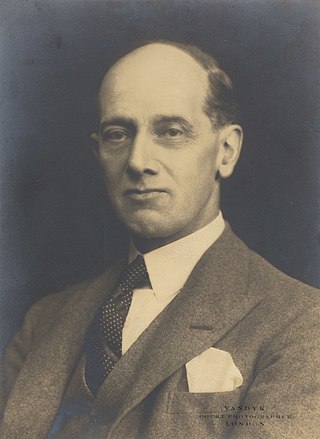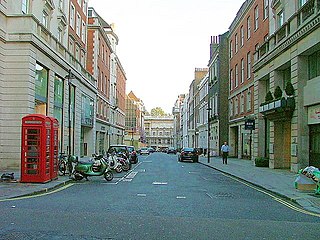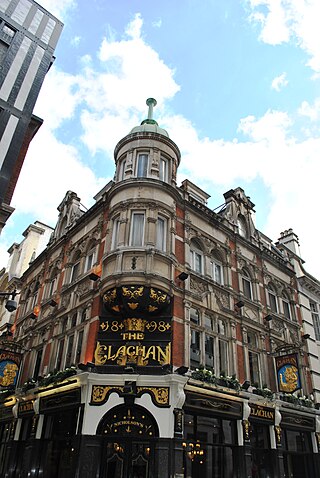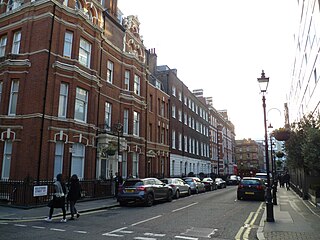
Hinton St Mary is a village and civil parish in Dorset, southern England. It is sited on a low Corallian limestone ridge beside the River Stour, one mile north of the market town Sturminster Newton. In 2001 the parish had 97 households and a population of 221. In 2013 the estimated population of the parish was 260. In 2021 the estimated population of the parish has decreased to 225.

The Willesden United Synagogue Cemetery, usually known as Willesden Jewish Cemetery, is a Jewish cemetery at Beaconsfield Road, Willesden, in the London Borough of Brent, England. It opened in 1873 on a 20-acre (0.08 km2) site. It has been described as the "Rolls-Royce" of London's Jewish cemeteries and is designated Grade II on Historic England's Register of Historic Parks and Gardens. The cemetery, which has 29,800 graves, has many significant memorials and monuments. Four of them are listed at Grade II. They include the tomb of Rosalind Franklin, who was a co-discoverer of the structure of DNA.

Cavendish Square is a public garden square in Marylebone in the West End of London. It has a double-helix underground commercial car park. Its northern road forms ends of four streets: of Wigmore Street that runs to Portman Square in the much larger Portman Estate to the west; of Harley Street which runs an alike distance; of Chandos Street which runs for one block and; of Cavendish Place which runs the same. The south side itself is modern: the rear façade and accesses to a flagship department store and office block. On the ground floors facing are Comptoir Libanais, Royal Bank of Scotland and Pret a Manger premises.

William Curtis Green was an English architect, designer and barrister who was based in London for much of his career. His works include the Dorchester Hotel, Wolseley House, New Scotland Yard, and the buildings, including the former Manor House, in Stockgrove Country Park. He was awarded the Royal Gold Medal in 1942. Around 20 of his designs are listed buildings. He was the younger brother of the craftsman and furniture designer Arthur Romney Green.
Rosalind Venetia Lane Fox Pitt-Rivers FRS (née Henley; 4 March 1907 – 14 January 1990) was a British biochemist. She became the second president of the European Thyroid Association in 1971; she succeeded Jean Roche and was followed by Jack Gross in this position, all three names inextricably linked with the discovery of the thyroid hormone triiodothyronine (T3).

Hill Street is a street in Mayfair, London, which runs south-west, then west, from Berkeley Square to Deanery Street, a short approach way from Park Lane. It was developed from farmland in the 18th century. Travelling one block to the east and south sees a fall of about three metres, whereas in the other direction the land rises gradually across six main blocks to beyond the north of Marble Arch. Hill Street's homes gained fashionable status from the outset: grand townhouses seeing use, at first, as seasonal lettings (rentals) and/or longer-term London homes of nobility — later, of other wealthy capitalists as much. Twenty-two, approximately half of its town houses, are listed. Along its course, only Audley Square House departs from townhouse-sized frontage, yet this shares in the street's predominant form of domestic architecture, Georgian neo-classical. Hill Street's public house is the oldest surviving one in Mayfair.

The Argyll Arms is a Grade II* listed public house at 18 Argyll Street, Soho, London, W1. It is located close to the site of the former Argyll House, the London residence of the Dukes of Argyll.

Sackville Street is a street in central London which today is mainly composed of offices and the rears of retail premises, but once was the home to several important medical figures.

Beak Street is a street in Soho, London, that runs roughly east–west between Regent Street and Lexington Street.

Riding House Street is a street in central London in the City of Westminster.

Bolton Street is a street in Mayfair London, between Curzon Street to its north, and Piccadilly to its south. It is named after the Duke of Bolton, and was from its construction during the 17th century and 1708 the westernmost street of London.

Duchess Street is a street in the City of Westminster, London, that runs west to east from Mansfield Street in the west to Hallam Street in the east, and crosses Portland Place about halfway. It is named after Margaret Bentinck, Duchess of Portland.

The Clachan is a public house at 33 Kingly Street, London W1.

Bulstrode Street is a street in Marylebone in the City of Westminster that runs from Welbeck Street in the east to Thayer Street in the west. It is crossed only by Marylebone Lane.

Grosvenor Gardens is the name given to two triangular parks in Belgravia, London, faced on their western and eastern sides by streets of the same name. Both roads run roughly north to south from Hobart Place and Grosvenor Place to Buckingham Palace Road, and is entirely the A3215.

The London Radium Institute was a public health initiative set in motion by Edward VII in 1909 and initially financed by Ernest Cassel and Edward Guinness. The architect T. Phillips Figgis was commissioned to build premises at 1 & 3 Riding House Street, the first part of which was ready in 1911, with the second being completed in 1914. The premises are now a Grade II listed building.

Mortimer Street is a street in the City of Westminster. It runs from the junction of Cavendish Place, Langham Place, and Regent Street in the west, to the junction of Cleveland Street, Goodge Street, and Newman Street in the east. It is joined by Great Portland Street, Great Titchfield Street, Wells Street, Nassau Street, Berners Street, and Berners Mews.

Church Row is a residential street in Hampstead in the London Borough of Camden. Many of the properties are listed on the National Heritage List for England. The street runs from Frognal in the west to Heath Street in the east. St John-at-Hampstead and its additional burial ground is at the west end of the street.

Margaret Street is a street that straddles the Marylebone and Fitzrovia areas of the City of Westminster in the West End of London, running from Cavendish Square to Wells Street via Regent Street (A4201), Great Portland Street, and Great Titchfield Street. It is north of and parallel to the major shopping street, Oxford Street. John Prince's Street runs between Margaret Street and Oxford Street.


















